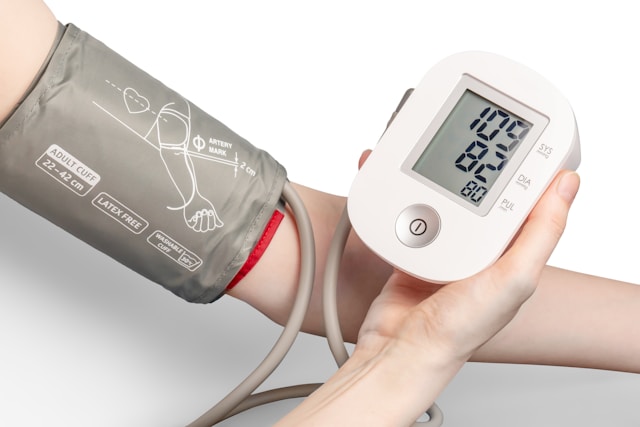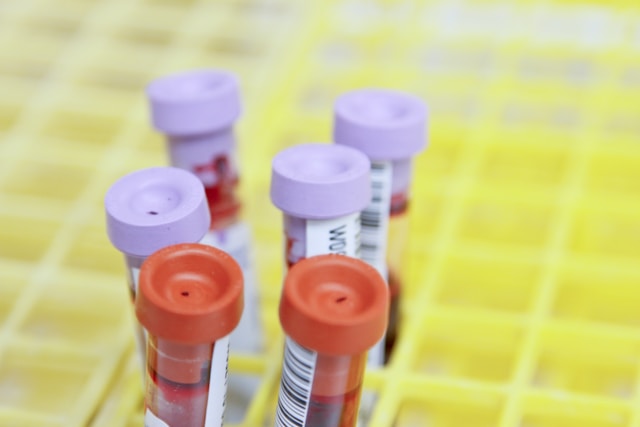Today is World Hypertension Day, an initiative of the World Hypertension League.
The primary aim of World Hypertension Day and May Measurement Month, which runs from May 1st to May 31st, is to highlight the importance of better prevention, detection and treatment of high blood pressure.
“Measure your Blood Pressure Accurately, Control It, Live Longer” is this year’s World Hypertension Month theme. It calls for combating poor awareness rates worldwide (especially in low—to middle-income areas) and advocates for accurate blood pressure monitoring and measurement methods.
May Measurement Month
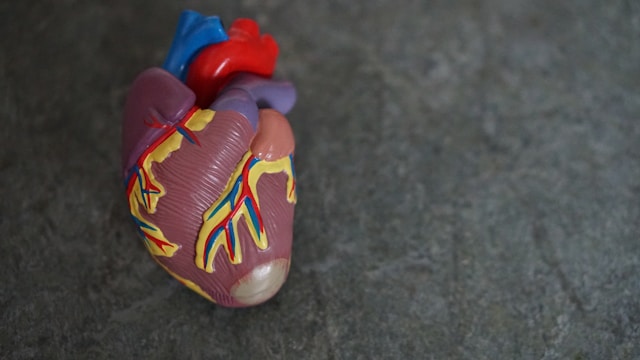
“With a quick arm squeeze, we could save millions of lives.”
Accurate blood pressure measurement and monitoring is the ultimate step in preventing hypertension.
The International Society of Hypertension created the May Measurement Month initiative in 2017. It aims to “highlight the importance of measuring your blood pressure (BP) and to raise awareness of the dangers posed by elevated BP and hypertension.”
“Even with increased threats to public health this last year, raised blood pressure remains the biggest single contributing risk factor for global death and the worldwide burden of disease. We want May Measurement Month to increase public understanding and help save lives that need not be lost.”
– Professor Neil Poulter, Former ISH President (2016 -2018) and Chief Investigator of MMM.
Public health campaigns like World Hypertension Day, May Measurement Month, and Salt Awareness Week are crucial in educating the public about the importance of cardiovascular health. Salt Awareness Week, for instance, focuses on the harmful effects of excessive salt consumption, which is a major contributor to high blood pressure.
These public health initiatives are even more needed in areas with poor penetration of accurate health and well-being information.
This extensive article covered the basics of hypertension, from detection to prevention and management.
We have also added resources to help you learn more about hypertension and World Hypertension Day.
There are resources for healthcare professionals who want to learn more about hypertension.
Introduction
High blood pressure is not just a concern for older adults; it can affect young adults, too, especially if they have a family history of hypertension, certain health conditions, or are leading an inactive lifestyle.
When your healthcare professional measures your blood pressure, they assess how hard your heart has to work to pump blood through your arteries.
If this pressure is consistently high, it could indicate hypertension.
This article will cover the basics of hypertension, its symptoms, causes, treatment options, and preventive measures. These include maintaining a healthy weight, eating a balanced diet low in sodium and high in potassium, engaging in regular physical activity, limiting alcohol consumption, and managing stress.
“OVER 10 MILLION LIVES ARE LOST EACH YEAR DUE TO HIGH BLOOD PRESSURE. YET ONLY 50% OF PEOPLE AFFECTED ARE AWARE THEY HAVE IT. SQUEEZE YOURSELF AND GET YOUR BP CHECKED?”
What Is High Blood Pressure?
High blood pressure, or hypertension, is a condition in which the force of blood pushing against the walls of the arteries is consistently too high.
It is measured using two numbers: systolic pressure, which represents the pressure when your heart beats, and diastolic pressure, which is when your heart rests between beats.
A normal blood pressure reading is typically around 120/80 mm Hg (millimetres of mercury), where 120 represents the systolic pressure and 80 represents the diastolic pressure. According to the World Health Organisation, a systolic pressure above 140 mm Hg and a diastolic above 90 mm Hg is considered high.
High blood pressure puts extra strain on your heart and blood vessels, increasing your risk of serious health issues such as heart disease, stroke, and kidney problems.
Hypertension is often referred to as the “silent killer” because it typically does not present any symptoms at the early stages. This is why it is crucial to have your blood pressure checked regularly, particularly if you have risk factors such as a family history of high blood pressure, obesity, or you lead a sedentary lifestyle.
Commonly associated with older age, hypertension is now increasingly prevalent among young adults.
According to the World Health Organization (WHO), globally, about 1 in 4 adults aged 18 years and older have hypertension.
While the prevalence rates vary by region, studies have shown a concerning trend of rising hypertension rates among young adults. Factors such as unhealthy diet, lack of physical activity, obesity, and stress contribute to this increase.
“Blood pressure is the pressure of blood pushing against the walls of your arteries.”
Elevated Blood Pressure

Your tissues and organs need oxygenated blood (oxygen-rich) to function correctly.
This oxygenated blood travels through a network of blood vessels (arteries, veins and capillaries).
When your heart beats, it generates the pressure (blood pressure) required to pump blood through the network of blood vessels.
Blood pressure readings measure how hard your heart is working and how strong your blood is pushing against the walls of your arteries.
The reading has two numbers: the top is called systolic, which measures the pressure when your heart beats, and the bottom is diastolic, which measures the pressure when your heart rests between beats.
A normal blood pressure reading is usually around 120 over 80.
If it is too high, it could mean your heart is working too hard, which can lead to health problems like heart disease or stroke.
If it’s too low, it might mean your body isn’t getting enough oxygen and nutrients.
The American College of Cardiology and the American Heart Association divide blood pressure into four general categories:
1. Normal Blood Pressure: Blood pressure below 120/80 mm Hg indicates optimal cardiovascular health, with the heart pumping blood effectively without strain on the arteries.
2. Elevated Blood Pressure: Systolic pressure between 120 and 129 mm Hg and diastolic pressure below (not above) 80 mm Hg suggest an increased risk of developing hypertension in the future.
Elevated blood pressure isn’t considered a health problem like high blood pressure; instead, it’s regarded as a category.
Your primary care provider will recommend lifestyle changes such as dietary modifications and regular exercise to prevent progression.
3. Stage 1 Hypertension: Systolic pressure ranging from 130 to 139 mm Hg or diastolic pressure ranging from 80 to 89 mm Hg indicates early-stage hypertension. While lifestyle changes are typically the first line of treatment, medication may also be prescribed depending on individual risk factors.
4. Stage 2 Hypertension: Systolic pressure of 140 mm Hg or higher, or diastolic pressure of 90 mm Hg or higher, signifies advanced hypertension. Treatment usually involves lifestyle modifications and medication to lower blood pressure and reduce the risk of complications.
Hypertensive Crisis
A hypertensive crisis is an emergency. Blood pressure at or above 180/120 mm Hg requires immediate medical attention to prevent severe complications such as stroke or heart attack.
Hospitalisation and intravenous medications may be necessary to lower blood pressure and stabilise the individual rapidly.
How Do You Check Blood Pressure?
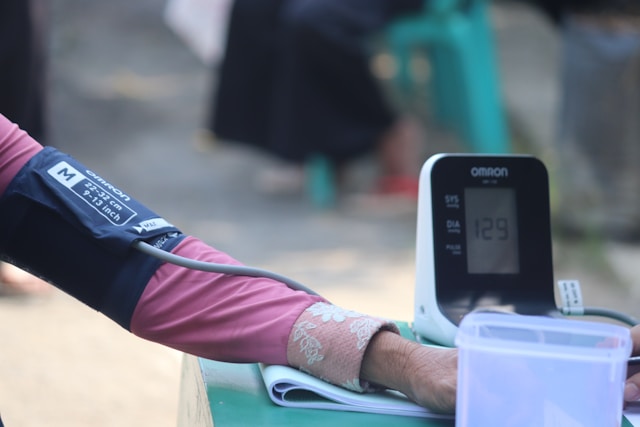
A blood pressure monitor or sphygmomanometer is an instrument used to check blood pressure.
The traditional sphygmomanometer consists of an inflatable cuff that goes around your arm, a pump to inflate the cuff, and a gauge to measure the pressure.
When the cuff is inflated, it temporarily stops blood flow in your arm. As the cuff deflates, a healthcare professional listens to your pulse using a stethoscope placed over an artery in your arm.
The pressure at which the first sound of blood pulsing through the artery is heard is recorded as the systolic pressure. The pressure at which the sound disappears is recorded as the diastolic pressure.
Today, digital blood pressure monitors are also available for home use. These monitors are easier to use and do not require a stethoscope. They automatically inflate the cuff and display the blood pressure reading on a screen.
Fun fact: Checking your blood pressure takes just 3-5 minutes.
What Are The Symptoms of High Blood Pressure?
Most people with high blood pressure show no symptoms at all. Your blood pressure can be dangerously elevated for years, and you won’t show any symptoms, which is why regular check-ups are essential.
Symptoms may include:
- Headaches.
- Dizziness.
- Blurry vision.
- Chest pain.
- Difficulty breathing.
- Or irregular heartbeat.
If you have any of these symptoms, it is important to get your blood pressure checked by a healthcare provider.
What Causes High Blood Pressure?
1. Lifestyle Factors:
– Dietary Habits: Excessive consumption of sodium-laden processed foods and inadequate intake of potassium-rich fruits and vegetables contribute to elevated blood pressure levels.
– Physical Inactivity: Lifestyles devoid of regular exercise not only promote weight gain but also compromise cardiovascular health.
– Obesity: The growing problem of obesity makes the heart and blood vessels work too hard, increasing the chance of having high blood pressure.
2. Genetics:
– Family History: Inherited genetic factors predispose certain individuals to hypertension, which is why emphasis is laid on the importance of proactive lifestyle modifications.
3. Mental Health:
– Chronic Stress: Persistent stress, anxiety, and depression trigger hormonal imbalances that elevate blood pressure levels.
– Mental Well-being: Prioritising mental health through stress management techniques is essential in averting hypertension.
4. Chronic Conditions:
– Renal Dysfunction: Kidney diseases, hormonal disorders, and sleep apnea constitute underlying health conditions that exacerbate hypertension in young adults.
How Can We Prevent It?
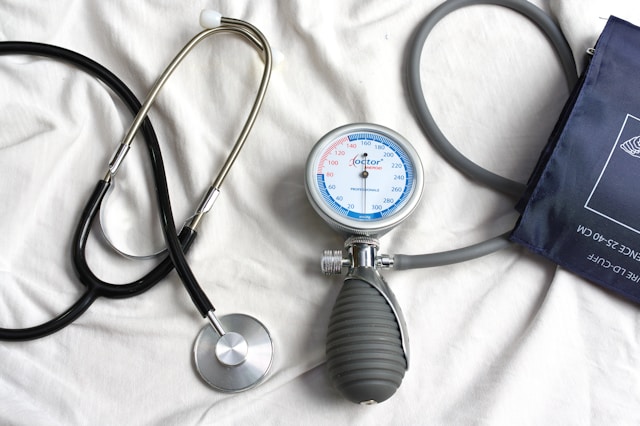
1. Dietary Modifications:
- Embrace Balanced Nutrition: Prioritise whole foods rich in nutrients, including fruits, vegetables, whole grains, and lean proteins.
- Limit Sodium Intake: Restrict your consumption of processed foods and fast food and opt for low-sodium alternatives to maintain optimal blood pressure levels.
- Adopt the DASH Diet: Embrace the principles of the Dietary Approaches to Stop Hypertension (DASH) diet, which is renowned for its efficacy in reducing blood pressure.
2. Physical Activity:
– Cultivate An Active Lifestyle: Incorporate at least 150 minutes of moderate-intensity aerobic exercise or 75 minutes of vigorous-intensity exercise weekly to enhance cardiovascular fitness.
– Integrate Strength Training: Supplement aerobic workouts with strength training exercises to fortify heart muscles and promote overall well-being.
- If hard-core exercises are not your strong suit, you can engage in other activities like walking, running, dancing, or yoga.
Just keep the body moving.
3. Stress Management:
– Practice Mindfulness: Engage in relaxation techniques such as meditation, deep breathing exercises, or yoga to alleviate stress and promote mental balance.
– Pursue Healthy Outlets: Embrace hobbies, social interactions, and leisure activities as constructive avenues for stress relief and emotional well-being.
4. Lifestyle Modifications:
– Moderate Alcohol Consumption: Limit alcohol intake to moderate levels, adhering to recommended guidelines to mitigate its adverse effects on blood pressure.
– Tobacco Abstinence: Steering clear of tobacco products and secondhand smoke safeguards cardiovascular health and reduces hypertension risk.
5. Regular Blood Pressure Monitoring:
- Empowerment Through Awareness: Routinely monitor blood pressure levels, particularly in individuals with familial predispositions or pre-existing health conditions.
- Collaborative Healthcare: Partner with healthcare providers to devise personalised management plans to optimise blood pressure control and mitigate long-term risks.
Treatment Options For High Blood Pressure
Several factors play a role in determining the most suitable treatment for you. These factors include the type of hypertension you have and the underlying causes that have been identified.
This year’s theme emphasises the crucial role of blood pressure control in fostering long life and overall well-being.
Through adherence to healthy lifestyle habits, including balanced nutrition, regular exercise, stress management, and tobacco cessation, young adults can empower themselves to take charge of their cardiovascular health and enjoy a fulfilling life free from the burdens of hypertension.
Hypertension may seem like a distant concern for young adults, but the choices we make today can significantly impact our cardiovascular health in the future.
Adapting healthy lifestyle habits and staying proactive about our well-being can reduce our risk of developing hypertension and allow us to enjoy a lifetime of heart-healthy living.
Remember, it is never too early to prioritise your cardiovascular health. Take the first step today towards a healthier tomorrow.
Additional Resources
- World Hypertension Day 2024 | International Society of Hypertension
- Salt Awareness Week, 2024
- May Measurement Month
- Guideline For The Pharmacological Treatment Of Hypertension In Adults
- The First WHO report Detailing The Devastating Impact Of Hypertension And Ways To Stop It
References:
1. American Heart Association. (n.d.). Understanding Blood Pressure Readings. Retrieved from https://www.heart.org/en/health-topics/high-blood-pressure/understanding-blood-pressure-readings
2. Centers for Disease Control and Prevention. (2020). About High Blood Pressure. Retrieved from https://www.cdc.gov/bloodpressure/about.htm
3. Mayo Clinic. (2021). High blood pressure (hypertension). Retrieved from https://www.mayoclinic.org/diseases-conditions/high-blood-pressure/symptoms-causes/syc-20373410
4. National Institute of Diabetes and Digestive and Kidney Diseases. (2020). High Blood Pressure. Retrieved from https://www.niddk.nih.gov/health-information/heart-disease/primary-prevention/high-blood-pressure
5. World Health Organization. (2019). Hypertension. Retrieved from https://www.who.int/news-room/fact-sheets/detail/hypertension
6. American Heart Association. (n.d.). Understanding Blood Pressure Readings. Retrieved from https://www.heart.org/en/health-topics/high-blood-pressure/understanding-blood-pressure-readings
7. National Heart, Lung, and Blood Institute. (n.d.). High Blood Pressure. Retrieved from https://www.nhlbi.nih.gov/health-topics/high-blood-pressure

